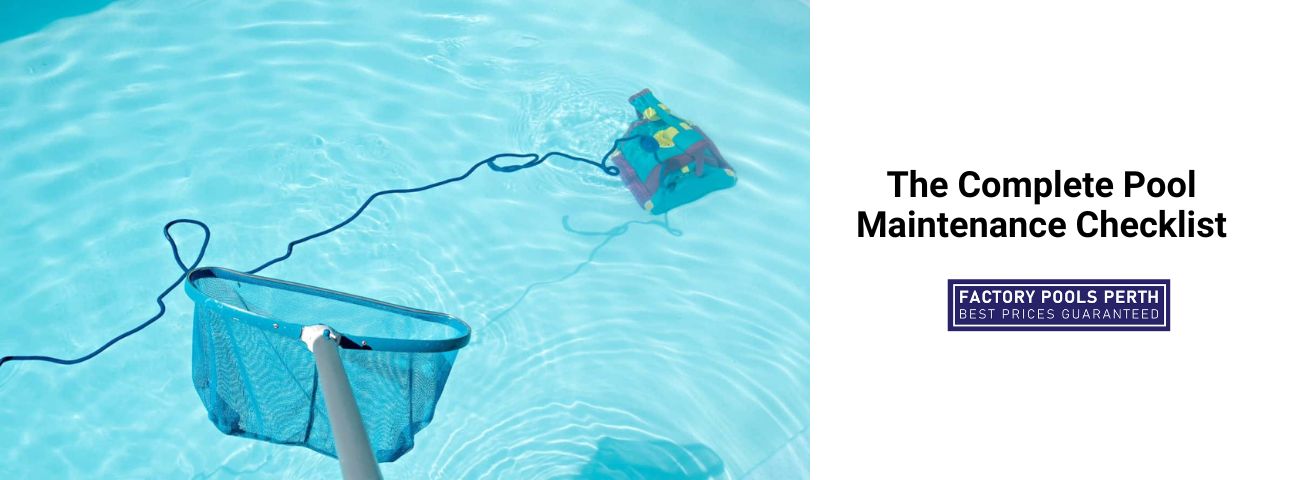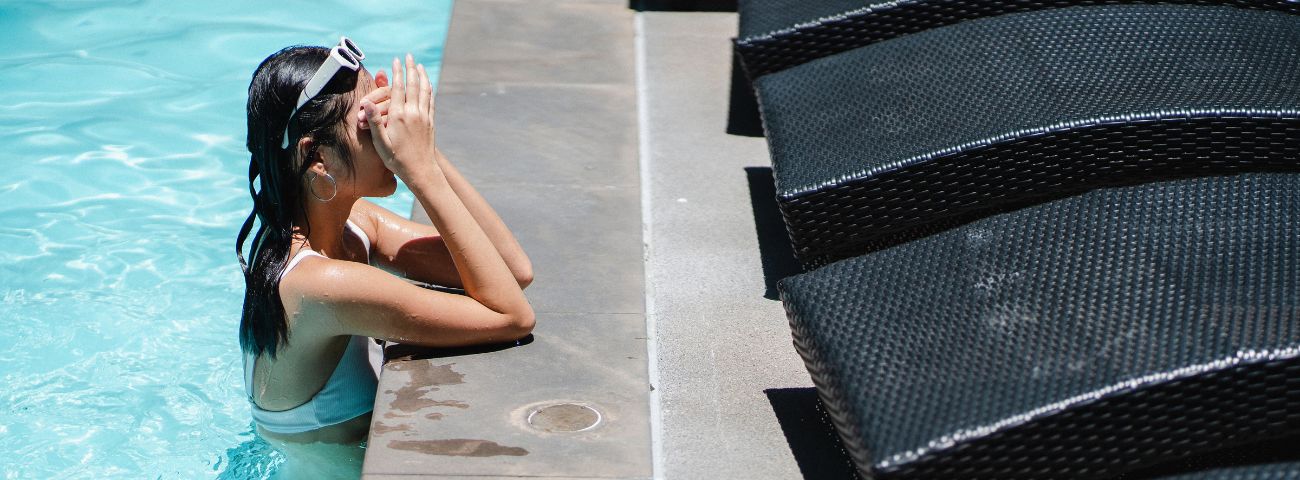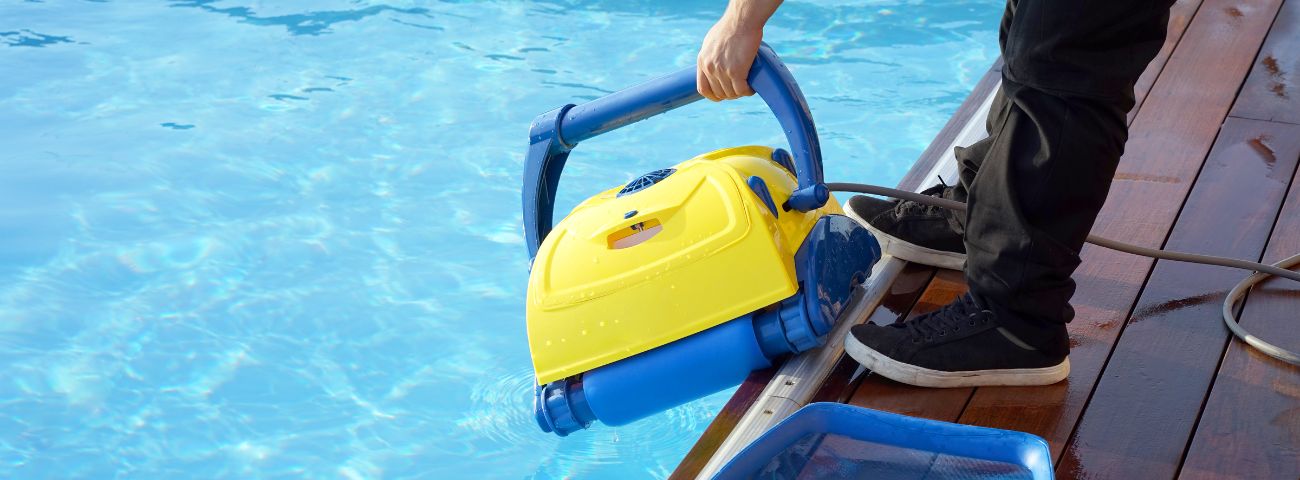The Complete Pool Maintenance Checklist
When you have a swimming pool, it becomes your responsibility to ensure its safety and cleanliness. This is why you need routine swimming pool maintenance. Whether you are experienced in pool maintenance or a complete beginner, this article will help ensure that your pool always remains in top condition.

Check out this complete pool maintenance checklist that will eliminate the hard work and help you maintain your swimming pool:
Daily Maintenance
1. The water level
The first thing that you have to do is check the water level at your pool. It should be an optimal level, not too low or too high. If the water level is too low, the skimmer won’t function as it will start to suck the air in. On the other hand, in the case of too high water level, the skimmer might stop skimming. To lower the water level in your pool, here is what you can do:
- Use a submersible pump. Make sure that you follow the instructions properly. In most cases, you will have to connect a sump or garden hose first. When you are lowering your pool’s water level using a pump, you can drop it off the edge on the pool’s deeper end. You can also use a siphon hose for draining your pool.
- Find the ‘waste’ setting on your multiport valve. It will divert water from the pool to the backwash hoe.
When you are draining water from your pool, don’t leave it unattended. Your target is halfway up the skimmer. If you are in doubt, consider leaving it too high as it is better than leaving it too low. Here is our post on how to maintain your swimming pool water!
2. The pump and the filter
The filter pressure gauge should be in the normal range indications that the water is flowing normally through the filter. In case the water pressure is lower than normal, this means that there is something wrong. It can be caused by closed valves and low water levels. It might also mean that you have a full basket. In case the water pressure is higher than normal, the problem can be because of an impeller. It might mean that you have a dirty valve or filter that is partially closed.
It is important to note that water pressure can fluctuate depending on the position of the valve. For example, if you use in-floor cleaners for running the return water, it might create back pressure increasing the pressure on the filter. Check inside the pump to see if water is properly flowing through it or not.
3. Pool cleaner
Pressure cleaners have to operate every day in two to three hour of cycles. You have to check them daily to see if the bag is full. In the case of a robotic or suction cleaner, you don’t have to run the cleaner daily. If you have a pool circulation problem, you might have to make an exception. In such cases, you will have to run your cleaner about three times every week to prevent any issues.
If you’re looking for ways to troubleshoot your suction pool cleaner, check out our tips here!
4. The baskets
Pump baskets come with a clear lid so that you can see if they are full or not. Some skimmer lids are also clear, but they are not that common. If you have a clean pool, you will have a clean skimmer basket as well. When they get full, you should empty them so that your pool’s suction remains effective and strong. Also, make sure that the weir is functioning and is in the right place.
Apart from the above-mentioned tips, here are a few other maintenance tasks that you have to complete daily:
- Use a leaf rake for removing leaves and debris.
- If the water is appearing “off” or cloudy, check the filter.
- Check the filtrations system to ensure that the water is properly circulating.
- Look for algae or other potential problems in your pool area.

Weekly maintenance
1. The chemical levels
There are some pool owners who check their chlorine and water pH levels every day. Even though it is not wrong, it is not required either. You have to check them two to three times every week. Make sure that the chemistry of your water is consistent. Avoid chlorination peaks and valleys and make sure that the pH is neither too low or high. You have to keep the water pH between 7.4 to 7.8. You also have to add chemicals for pH, alkalinity, and sanitization. Check out our post here on how sunlight can affect the chlorine in your pool!
2. The alkalinity
Total alkalinity helps in maintaining the water’s pH level. It shouldn’t get too high as it will become quite hard to adjust it. Too low total alkalinity might make it difficult for you to control the pH level. Use sodium bicarbonate to increase the total alkalinity. The optimal level is between 80 to 150 PPM.
Monthly maintenance
1. CYA and calcium levels
Cyanuric Acid and calcium levels usually stay stable every month. But, you have to test it to make necessary adjustments. The calcium hardness should be around 200 to 400 PPM and the Cyanuric Acid has to be between 40 to 80 PPM.

2. Salt levels
For people with saltwater pools, it is important to test the salt levels as well. You can either do it yourself or take a sample to a pool expert for analysis. Make sure that you get it tested for Cyanuric Acid, total dissolved solids, and metals as well. Once you have the analysis report, you can make necessary adjustments.
Yearly maintenance
1. Slide surfaces
If you have a busy pool, you might need cleaning more frequently. But, in most cases, you are required to clean the slides and diving board only one or two times every wear. Make sure that you use the right cleaner and not get chemicals into your pool.
2. Bolts
As a pool owner, safety has to be your top priority. Make sure that the bolts of your ladder tread or diving board are not loose.
3. Filters
You have to disassemble and clean your filter thoroughly and replace the cartridge elements. How often you have to do it will depend on the guidelines provided by the manufacturer. Usually, it is once a year. The elements of the cartridge elements should be replaced every 12 to 19 months. You also have to lubricate the O-rings and tune up your pool cleaners in order to keep your pool running smoothly.
By following this checklist for complete pool maintenance, you will be able to ensure that your pool is safe, clean, and functional all year round. Here are some more tips and tricks on pools and pool maintenance!


